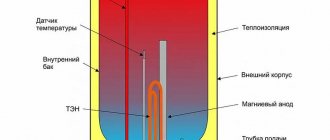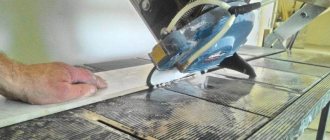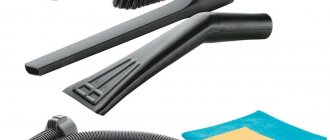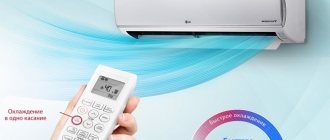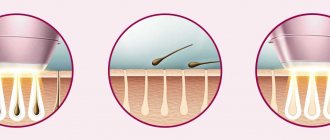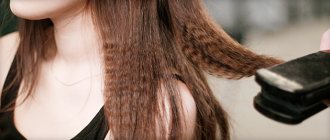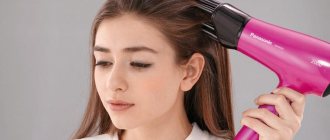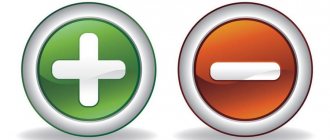What is an epilator
What is an epilator? This is a special electrical device designed to remove body hair using special plates that pull it out by the roots. Epilation is very painful, and is perceived by many women as a medieval instrument of torture, which is a necessary condition for obtaining smooth and silky skin.
Some people mistakenly believe that an epilator and a depilator are the same thing. This is far from true. While an epilator removes hair along with the follicle, a depilator removes only the outer layer without affecting the hair roots. Epilation and depilation are still the main methods in the fight against unwanted hair.
The first attempts to remove hair from unwanted areas were made in ancient Egypt. Various wax masks and tweezers were used for hair removal and depilation.
Range of home epilators
There are many devices for home hair removal on the market, and they differ from each other not only in appearance, but also in the principle of their effect on hairs. Each such device has its own purpose, advantages and disadvantages, and for some types of hair removal there are even strict contraindications.
Electric epilators
One of the most common devices for removing body hair is an electric epilator. Such a device is found in the range of most popular manufacturers of cosmetology equipment, and the results from its use are quick and quite long-lasting.
The principle of operation of an electric epilator is to pull out body hairs along with the roots, which ensures smooth skin for up to two weeks. The result depends on the natural intensity of hair growth.
Depending on the mechanism installed in the electric epilator, the following devices are distinguished:
- spring;
- disk;
- tweezers.
The spring epilator was one of the first to appear on the market, and its operating principle is that hair is removed from the body using a rotating spring. Despite its high efficiency, such a device also has a significant drawback - the working mechanism often breaks down and requires repair.
The disk epilation device has a more advanced mechanism, consisting of rotating disks that capture hairs and pull them out by the roots at the moment of intersection.
The tweezer epilator is the newest device in this series, characterized by reliability and long service life. Its operating principle is similar to the previous two options, but vegetation is removed by paired plates, which during rotation act similarly to tweezers and provide faster results.
The equipment included with the epilator may differ significantly, which will ultimately affect its cost. A set with a hair removal device may include:
- pain-relieving supplements;
- various nozzles;
- bags for storage and transportation;
- brushes for cleaning the working mechanism.
To alleviate discomfort during hair removal, the device may be supplied with cooling attachments or mittens, or massage devices. Trimmer attachments will help you shorten hairs to the desired length before direct epilation and perform an intimate haircut. The device can also be equipped with exfoliating attachments, which during the epilation process will remove dead cells from the skin and reduce the risk of ingrown hairs.
Photo gallery: types of home electric epilators
Hair removal with an electric epilator is carried out with numerous tweezers installed on its working surface.
During operation of the device, the disc elements open and close, capturing hairs and pulling them out
Hair removal with a spring-type epilator is carried out by rotating the spring.
There are certain rules for removing hair with an electric epilator:
- You should not expect perfect hair removal the first time and expect the impossible from the device and yourself. The skill comes with experience and knowledge of your most pain-sensitive points on the body.
- For the first use, the speed of the electroepilator should be set to the minimum level, although the procedure will take longer. In addition, the electroepilator captures dense and thick hairs only with slow rotation. If the device comes with a massage attachment, it is worth installing it to relieve pain.
- Before you begin the hair removal process, you should take a hot bath or at least a shower. On steamed skin with enlarged pores, hairs become more amenable to removal, and the epilation process is less painful. As an additional preparation of the skin for the procedure, you can use a scrub that will remove dead cells, and thoroughly warm the body with a washcloth or towel.
- Epilation is carried out exclusively against hair growth in order to capture the maximum amount of hair and not to move the device over one place several times. From the very first procedure, it is important to remember this rule and accustom yourself to strictly observe it.
- The electric epilator should not be pressed tightly against the skin, since other than scratches and irritation, such actions will not bring other results. Move the device over the skin smoothly, holding it at an angle to accurately capture hairs
Video: secrets of hair removal with an electric epilator
Trimmers
A trimmer is a special device in the line of home epilators that allows you to remove hairs pointwise. Most often, such a device is used to remove hair from the nose and ears, correct eyebrows, create intimate hairstyles, and remove hair from the armpits and bikini line.
Trimmers operate mainly on batteries or a built-in battery and do not pull out hairs by the roots, but only shave them down to the very base. The cutting elements of the trimmer consist of metal blades arranged in two rows. The bottom row is motionless, but the top one moves, opening and closing with the bottom one, and at the same time cutting off the hairs that fall under it.
The trimmer allows you to painlessly cut hairs at the root or to a certain length and even make intimate haircuts
After using the trimmer, the skin becomes smooth to the touch, and this is not the only advantage of the device. This device is very convenient to use due to its compactness, and many devices are powered by a built-in or replaceable battery, which allows you to take them with you on trips. In most cases, the devices have a sufficient degree of moisture protection and are suitable for bath procedures.
Depending on the type, trimmers can be equipped with a working surface of various widths, and for more universal use they are equipped with a variety of attachments.
The assortment includes:
- a vertical micro-nozzle that allows you to correct eyebrows, cut hairs above the lip, in the nose and ears;
- a comb that helps trim hair to the desired length;
- pumice nozzle for removing dead cells;
- epilator attachment that pulls out hairs.
In addition to attachments, trimmers are often equipped with additional accessories that facilitate their use:
- stands,
- holders,
- cleaning brushes,
- stencils for eyebrows and intimate haircuts.
Despite the advantages and ease of use of such a device, it also has a significant drawback. Since the hairs are not removed, but only cut off, the hair removal procedure will have to be carried out regularly, every 1-3 days, because they grow back quite quickly.
Most often, a trimmer is used to remove hairs in the bikini area, since it does not cause severe irritation and pain and allows epilation even before going to the beach.
To remove hairs using a trimmer, you should epilate according to the following rules:
- For hair removal, apply shaving gel or regular shower gel to the skin.
- Hair removal with a trimmer is carried out against hair growth with slight stretching of the skin to ensure a snug fit of the device blades.
- During the first procedure, the trimmer speed should be minimal so as not to cause discomfort. The effort and pressure on the skin when using a trimmer is unnecessary and ineffective.
- After epilation, the skin must be treated with aftershave balm or an antiseptic and a moisturizer, possibly for children, should be applied to it.
Photoepilators
Until recently, photoepilation was available to girls exclusively in clinics and salons, but manufacturers of cosmetic equipment have corrected this situation by releasing specialized devices based on photoflashes for home use.
The photoepilator allows you to carry out the salon procedure at home
At their core, home photoepilators operate similarly to salon ones: they emit high-intensity pulsed light, leading to the destruction and death of hair follicles. The operation of the photoepilator is based on photothermolysis. The device generates flashes of light of high frequency and intensity, heating the hair shaft and causing its death along with the follicle. It is noteworthy that the photoepilator can only affect hairs in the active growth phase. That is why home procedures will not bring instant results, and you will have to carry out a whole course of photoepilation until the effect becomes noticeable.
The disadvantages of such an epilator also include the fact that it is not suitable for everyone. This device does not eliminate light, vellus, red, or gray hairs, since the flash acts on the coloring pigment melanin present in the hair, and light hairs contain a minimal amount of it. The use of a photoepilation device on dark skin will also be ineffective. The best results from home photoepilation sessions are observed in fair-skinned girls with dark hair on their bodies.
The cost of a photoepilator is quite high, however, if you plan to use it on large areas of the body (back, legs, etc.), then the price will be equal to one or two photoepilation sessions in a salon. It is also convenient that home photoepilators can independently determine skin type, and also do not generate a flash until the lamp fits tightly to the body.
Home devices for laser and ELOS hair removal are also similar in operating principle and efficiency.
Of course, the power of such devices is much lower than that of salon equipment, but at the same time, you are more likely to use them regularly at home.
Home photoepilation is practically devoid of unpleasant consequences, since the power of devices for use at home does not allow it to cause much harm to the skin, and modern models are also equipped with special sensors that do not allow flashes to be triggered when a fresh tan or too dark skin occurs.
Slight discomfort and even pain during photoepilation may well be observed, especially in areas with sensitive and delicate skin.
The following factors can affect the sensitivity and intensity of pain:
- Fresh tan. Sunbathing before and after photoepilation is not recommended for 10–14 days, as this can lead not only to pain, but also to the appearance of unwanted pigmentation.
- Repeated photoflash on an already treated area of skin. Normally, when using a photoepilator, only slight heat and warmth are felt, but multiple flashes in one area can cause pain and even burns, and are therefore contraindicated.
- Damage to the skin. In case of irritation, abrasions and wounds, it is worth holding off using a photoepilator, as the procedure will bring nothing but pain.
- Cooling. Some models of photoepilators require the use of a special cooling gel immediately before the procedure, which provides an analgesic effect.
- Power setting. When using the device for the first time, you should start with the minimum flash intensity, and, if discomfort does not occur, gradually increase it.
Operating principle
The principle of operation of the epilator is based on the synchronous counter-movement of several pairs of special discs, which, when interacting, capture the hair and, thanks to the counter-movement, pull it out by the roots.
With the multi-pint system, even the smallest hairs can be removed. This system is used by all manufacturers, although it has a different name. Regardless of the manufacturer, all devices have several speed modes, which determine the frequency of plucking.
- The first mode is intended for short and thin hair. Has a relatively low speed. Experts recommend using the first speed to work with small and fragile hairs in places where there is a risk of tearing the hair rather than tearing it out.
- The second mode is faster, characterized by more frequent pinching. It is designed to remove long and strong hair. In the second mode, the speed of the device increases, therefore, the procedure time is significantly reduced.
Types of epilators
Depending on the design and principle of operation, the following types of epilators are distinguished.
- Disk. The device is based on rotating discs that pluck hairs when they come into contact with each other. These models are the prototype of modern tweezers.
- Tweezers. The operating principle of a tweezer epilator differs from a disk epilator in that its design uses metal plates instead of rotating disks. Such devices are characterized by higher efficiency and speed.
There are, of course, laser and photoepilators with a completely different operating principle, but they are usually used in beauty salons. Although today models have begun to be produced for home use, they have not yet become widespread due to their high cost and large number of application nuances.
What to look for when purchasing
When purchasing any of these types of epilators, you should pay attention to the following points.
Manufacturer
When choosing an epilator, you should not give preference to cheaper models from unknown brands. Most likely, such a device will not be highly reliable and functional. By purchasing products from well-known brands, you are guaranteed to receive the right to service at a specialized service center.
Availability of pain relief
This parameter is the most important in terms of use. It depends on whether you will experience pain during the procedure. In different models, pain relief can occur in different ways:
- cooling;
- massage;
- use of nozzles.
In the first case, in order to cool the skin, it is necessary to place a special container containing frozen water in the body of the device. This method works great on all skin types.
How does an epilator with a massage system work? The massage is provided by an additional attachment that has a special shape, which, when interacting with the skin, affects the nerve endings and “distracts” you from the main pain.
The use of conventional nozzles is provided for models in the low price category. Unlike a massage attachment, a regular attachment does not have an analgesic effect. The operating principle is based on special holes on the nozzle, which allow certain parts of the hair to pass through, thereby reducing immediate pain from use.
Ergonomics
When purchasing, pay attention to the appearance and shape of the device. Be sure to hold it in your hands and make a few characteristic movements in the air. If you experience some discomfort when carrying out these actions, consider another model. Pay attention to the location of the buttons: they should be easy and comfortable to press.
Ease of storage and transportation
Quite often, the epilator comes with a special case-bag designed to store the device. Without it, transporting the device will become quite problematic. Most manufacturers pay great attention to the case for the device and give it a beautiful and stylish appearance.
Depilation at home
It would seem that it’s difficult to use an electric epilator: plug it into a socket and run it over the skin, removing unnecessary hairs. However, there are some points that you need to know about, and then the term “depilation” will not evoke terrible associations, and the effectiveness of the procedure will be maximum.
Skin preparation
Before you start treating your skin with an epilator, you need to prepare it for the process. First, it is recommended to cleanse the skin of impurities and steam it in a hot bath to open the pores. This will make it much easier to pull the hairs out of the skin along with the follicle.
Consequently, the pain at the time of depilation will not be so severe, and due to the fact that the hairs are removed along with the root, in the future there will be fewer of them, and they will grow thin, weak and almost unnoticeable.
While taking a bath, the skin can be treated with a scrub. This will remove the stratum corneum and thus make it easier to remove hair from the skin.
After treatment with a scrub, the stratum corneum becomes thinner, which makes hair removal easier
After steaming and scrubbing, it is recommended to disinfect the skin surface so that during depilation, pathological microflora does not get under the skin, which contributes to the occurrence of inflammatory processes.
Hair length
One of the determining factors in the pain of the procedure is the length of the hairs . If the hairs are too short, the epilator tweezers will not be able to capture the entire hair shaft, but only its tip. As a result, the hair will be pulled painfully, but will not be pulled out or will break. Consequently, pain will appear, but the result will not be achieved.
Long hairs seem to be removed quite effectively, but the process of removing them will be associated with particularly painful sensations.
The optimal hair length before depilation should be 5 mm.
Depilation direction
In the process of pulling out hairs, the direction in which the epilator moves is important. To minimize pain and increase the effectiveness of depilation, the procedure should be performed against hair growth .
If you do the opposite, then mechanical tweezers will not be able to capture all the hairs as the epilator passes over the skin. Therefore, you will have to treat the same area of skin several times, and this is accompanied not only by pain, but also fraught with irritation. You also need to understand that if the hairs are poorly captured, they often do not pull out, but break off .
In the bikini area and armpits, the movement of the epilator should be circular. In addition, the epilator should not be constantly held above the surface of the skin, but should be applied pointwise to the treated area. Such manipulations will significantly reduce pain and reduce irritation.
When depilating any area, the epilator should be held at an angle of 90° to the surface of the skin.
Speed mode selection
All epilators offer at least two tweezer speeds. Low speeds should be used for thinner and more sensitive skin (bikini area, armpits, upper lip, ankles, inner bend of the knee). High speed mode is used on denser skin and a flat surface of the body (arms, legs).
Skin tension
Depilation will be less painful if you slightly stretch the treated area of skin during the procedure . This point is especially relevant for the bikini area, armpits and upper lip. It is in these places that the skin has no tension, and when hairs are pulled out, the skin is pulled behind them, as a result of which the follicle is either not removed at all and is injured, or when it is removed, sharp pain occurs.
Video: using an epilator at home
How to reduce pain
No matter what tricks are used during the depilation procedure to reduce pain syndromes, severe pain is still experienced in some areas. We are talking about the bikini area and armpits. In addition, some women have too low a pain threshold, and they are forced to endure unbearable pain.
First of all, you initially need to choose epilators that come with special attachments that soften the effect of the device. However, it is fair to note that all these additional devices do not always cope with their task.
The epilator should come with attachments that soften the effect of the device.
In such cases, experts recommend the use of painkillers.
Often before depilation, women apply Emla cream to the treated skin. It contains two anesthetics: lidocaine and prilocaine.
The drug is applied to the skin in a thick layer so that the skin is not visible. An occlusive sticker is applied on top or, if it is missing, a cling film is applied. Application time should be 1 hour for the bikini area and armpits and 30–40 minutes. for the skin of the hands or feet, after which the sticker is removed, and the remaining product is removed with a dry cloth.
The effect of anesthesia after removal of the application lasts 2 hours. This time is enough to treat all problem areas with the epilator.
You can also use other formulations for skin anesthesia: Lidocaine spray, Acriol Pro cream, Light Dep. Before using each painkiller, you must carefully study the instructions and become familiar with the contraindications for use.
Photo gallery: anesthetics
Emla is the most popular pain reliever for depilation.
The anesthetic effect occurs within 30–40 seconds, but lasts only 15 minutes
After applying Light Dep cream, the analgesic effect occurs within 15–60 minutes, and the duration of anesthesia is 4 hours
Acriol Pro cream, like Emla, contains lidocaine and prilocaine
This is interesting. Studies have shown that women before menstruation experience depilation much more painfully. Therefore, it is better to schedule the procedure at the beginning of the cycle. It was also revealed that in the morning the pain is much stronger than in the evening.
Treatment of the skin after depilation
During the procedure, the skin was exposed to aggressive influences, and it is not surprising that certain irritations may appear on it. Most often it is hyperemia (redness) and red dots. Redness of the skin is caused by the fact that under the irritating influence of the epilator tweezers, blood flow increases in the layers of the skin.
The red dots are due to the fact that the hair is pulled out along with the follicle, therefore, the capillaries that fed it are broken.
To eliminate irritation or simply to soothe the skin, do the following:
- cool the skin with an ice cube (you can use herbal infusions of chamomile, sage, calendula, green tea);
- lubricate the treated area with light baby oil or a soothing drug (Panthenol, Bepanten);
- to prevent inflammatory processes, it is recommended to apply an antiseptic to the skin after depilation (for example, hydrogen peroxide, Chlorhexidine);
- effectively prevents and also eliminates aloe irritation. To do this, you need to cut a small piece of the sheet and remove its top layer. Rub the irritated areas with aloe pulp;
- To remove red spots or pimples, you can use an oil balm: 1 tbsp. l. olive oil and 5 drops of tea tree essential oil. The skin must be treated 2 times a day;
- The skin can be helped by compresses with infusion of birch leaves: 1 tsp. Pour 1/2 cup of boiling water over crushed birch leaves and let it brew until it cools completely. Strain the prepared solution, moisten a natural cloth in it and apply to the problem area for 20 minutes;
- If ingrown hairs appear later, you must first remove them with a needle and tweezers, and then treat the skin with an antiseptic. In the case when an abscess has formed at the site of an ingrown hair, the purulent inflammation cannot be squeezed out, because the follicle will change its position and its hairs will constantly grow into the surface of the skin.
Video: removing ingrown hairs
Recommendations for use
Many women who pick up an epilator for the first time wonder how to use it correctly? You can easily find many videos on the Internet with a detailed explanation of the process, so below are important tips that will help you quickly master this device.
- Grow your hair long enough. If during depilation you remove all hair at the initial stage, epilation requires hairs at least 0.5 cm long. The epilator cannot catch hairs that are too small with the plates and, accordingly, remove them along with the bulb.
- Take a hot shower. The most favorable time for the procedure is after a hot shower or bath. Heat has a positive effect on the skin, the pores open, which makes it easier and faster to remove unwanted hair.
- During the procedure, do not press on the epilator. This can damage your skin and discourage you from doing such activities forever. Hold the epilator at a slight angle and smoothly move it over the skin for better hair removal.
No ingrown hairs
One of the unpleasant consequences of hair removal is the ingrowth of hairs under the skin. Ingrown hairs not only look unsightly, but can also cause inflammation. Permanent hair removal causes some damage to the follicle, and new hair emerges weaker and thinner. For this reason, hairs cannot penetrate the skin.
Ingrown hairs are a common consequence of hair removal as a result of violation of the rules of the procedure or improper subsequent skin care.
To prevent ingrown hairs:
- Before epilation and between procedures, you should thoroughly exfoliate the areas where hair is removed, at least twice a week.
- Use moisturizer and special products that slow down hair growth.
- Treat particularly sensitive areas with Chlorhexedine or salicylic acid after hair removal.
- Do not wear tight clothes and underwear, especially synthetic ones, immediately after the procedure.
Hair removal with a trimmer, as a rule, does not cause ingrown hairs, however, regular peeling of the skin after it and between procedures will not be superfluous. The sharp ends of the hairs, after being cut, can bend, pierce the skin and continue their further growth under it. Using a scrub will avoid this side effect.
After photoepilation, hairs also do not grow under the skin; moreover, hairs that had previously grown in from other hair removal methods are destroyed and eliminated under the influence of light flashes from the device.

